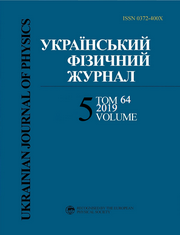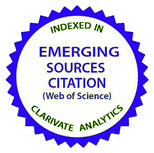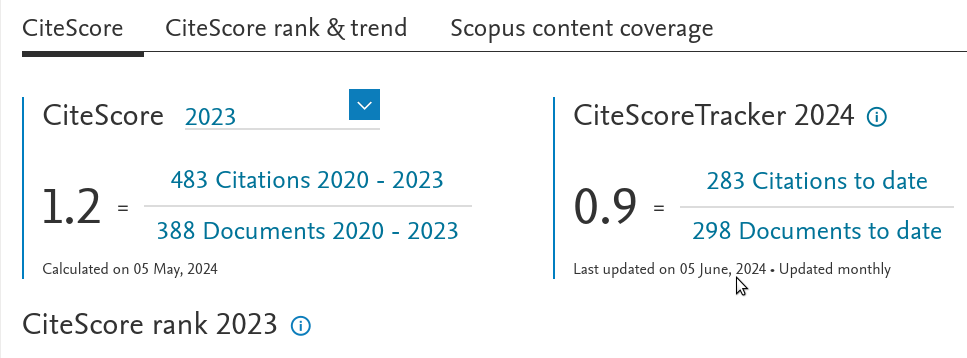Особливості переносу енергії електронного збудження в карбазолвмісних полімерах
DOI:
https://doi.org/10.15407/ujpe64.5.406Ключові слова:
полi-N-вiнiлiлкарбазол, полi-N-епоксипропiлкарбазол, флуоресценцiя, фосфоресценцiя, перенос енергiї, синглетнi i триплетнi екситониАнотація
Дослiджено спектри люмiнесценцiї плiвок полi-N-вiнiлкарбазолу (PVK), полi-N-епоксипропiлкарбазолу (PEPK), полi-N-вiнiл-3-хлоркарбазолу (Cl-PVK) i полiстиролу (PS) з домiшкою бiс[2-(2′-бензотiенi)-пiридинато-N,C3′](ацетилацетонату) iридiю (Btp2Ir(acac)). Зазначенi карбазолвмiснi полiмери перспективнi для практичного використання в електролюмiнесцентних пристроях. Встановлено, що квантовий вихiд сенсибiлiзованої фосфоресценцiї молекул Btp2Ir(acac) в матрицi карбазолвмiсного полiмеру нижчий, нiж при їх прямому збудженнi в PS. Показано, що пiсля введення в PVK з домiшкою Btp2Ir(acac) молекул бензофенону, який трансформує частину синглетних екситонiв у триплетнi, iнтенсивнiсть сенсибiлiзованої фосфоресценцiї Btp2Ir(acac) зменшується, тобто ефективнiсть переносу енергiї синглетними екситонами вище, нiж триплетними. Цi результати ми пояснюємо тим, що з переносом енергiї на акцептор конкурують процеси локалiзацiї екситонiв у хвостових енергетичних станах та захоплення триплетних екситонiв продуктами окислення полiмерiв. Виявлено, що квантовий вихiд сенсибiлiзованої фосфоресценцiї Btp2Ir(acac) в матрицi PVK майже у пiвтора раза нижчий, нiж у PEPK. Зроблено висновок про те, що у матрицi PVK процес автолокалiзацiї синглетних екситонiв в ексимероутворюючих центрах та утворення сандвiч-подiбних ексимерiв конкурує з переносом енергiї збудження на акцептор.
Посилання
J. Kido, K. Hongawa, K. Okuyama, K. Nagai. White light-emitting organic electroluminescent devices using the poly(N-vinylcarbazole) emitter layer doped with three fluorescent dyes. Appl. Phys. Lett. 64, 815 (1994). https://doi.org/10.1063/1.111023
Chang-Lyoul Lee, Kyung Bok Lee, Jang-Joo Kima. Polymer phosphorescent light-emitting devices doped with tris(2-phenylpyridine) iridium as a triplet emitter. Appl. Phys. Lett. 77, 2280 (2000). https://doi.org/10.1063/1.1315629
Weiguo Zhu, Yueqi Mo, Min Yuan, Wei Yang, Yong Cao. Highly efficient electrophosphorescent devices based on conjugated polymers doped with iridium complexes Appl. Phys. Lett. 80, 2045 (2002). https://doi.org/10.1063/1.1461418
Y. Kawamura, S. Yanagida, S.R. Forrest. Energy transfer in polymer electrophosphorescent light emitting devices with single and multiple doped luminescent layers. J. Appl. Phys. 92, 87 (2002). https://doi.org/10.1063/1.1479751
C.D. Muller, A. Falcou, N. Reckefuss et al. Multi-colour organic light-emitting displays by solution processing. Nature 421, 829 (2003). https://doi.org/10.1038/nature01390
B.C. Krummacher, Vi-En Choong, M.K. Mathai et al. Highly efficient white organic light-emitting diode. Appl. Phys. Lett. 88, 113506 (2006). https://doi.org/10.1063/1.2186080
D.-H. Lee, J.S. Choi, H. Chae et al. Highly efficient phosphorescent polymer OLEDs fabricated by screen printing. Displays 29, 436 (2008). https://doi.org/10.1016/j.displa.2008.02.006
Sung II Ahna, Wan Kyu Kim, Si Hong Ryu et al. OLED with a controlled molecular weight of the PVK (poly(9-vinylcarbazole)) formed by a reactive ink-jet process. Org. Electronics 13, 980 (2012). https://doi.org/10.1016/j.orgel.2012.02.016
Organic Light-Emitting Materials and Devices, edited by Zhigang Rick Li, Hong Meng (Taylor and Francis, 2007).
Highly Efficient OLEDs with Phosphorescent Materials, edited by H. Yersin (Wiley, 2008).
Shang-Hui Ye, Tian-Qing Hu, Zhou Zhou et al. Solution processed single-emission layer white polymer light-emitting diodes with high color quality and high performance from a poly(N-vinyl)carbazole host. Phys. Chem. Chem. Phys. 17, 8860 (2015). https://doi.org/10.1039/C4CP06063F
Yanqin Miao, Kexiang Wang, Bo Zhao al. High-efficiency/CRI/color stability warm white organic light-emitting diodes by incorporating ultrathin phosphorescence layers in a blue fluorescence layer. Nanophotonics 7, 295 (2018). https://doi.org/10.1515/nanoph-2017-0021
E. Nengquan Li, Yu Zhang, Yiwu Quan et al. High-efficiency solution-processed WOLEDs with very high color rendering index based on a macrospirocyclic oligomer matrix host. Opt. Mater. Expr. 10, 3208 (2018). https://doi.org/10.1364/OME.8.003208
K. Landfester, R. Montenegro, U. Scherf et al. Semiconducting polymer nanospheres in aqueous dispersion prepared by a miniemulsion process. Adv. Mater. 14, 651 (2002). https://doi.org/10.1002/1521-4095(20020503)14:9<651::AID-ADMA651>3.0.CO;2-V
Yu.A. Skryshevskii. Luminescence of carbazolyl-containing polymers doped with iridium chelates. Zh. Prikl. Spektrosk. 75, 323 (2008) (in Russian). https://doi.org/10.1007/s10812-008-9051-4
M. Pope, C.E. Svenberg. Electronic Processes in Organic Crystals (Oxford Univ. Press, 1982).
Y. Kawamura, K. Goushi, J. Brooks et al. 100% phosphorescence quantum efficiency of Ir(III) complexes in organic semiconductor films. Appl. Phys. Lett. 86, 071104 (2005). https://doi.org/10.1063/1.1862777
A. Itaya, K. Okamoto, S. Kusabayashi. Singlet excitation energy transfer in the vinyl polymers with pendant carbazolyl groups. Bull. Chem. Soc. Jpn. 50, 22 (1977). https://doi.org/10.1246/bcsj.50.22
S. Tagawa, M. Washio, Y. Tabata. Picosecond time-resolved fluorescence studies of poly(N-vinylcarbazole) using a pulse-radiolysis technique. Chem. Phys. Lett. 68, 276 (1979). https://doi.org/10.1016/0009-2614(79)87200-0
G. Peter, H. Bassler, W. Schrof, H. Port. Picosecond study of singlet exciton dynamics in polyvinylcarbazole (PVK) in the temperature range 5-300 K. Chem. Phys. 94, 445 (1985). https://doi.org/10.1016/0301-0104(85)80063-X
Yu.P. Piryatinskii, V.N. Yashchuk, Yu.A. Cherkasov, Yu.N. Kirpach, E.L. Aleksandrova. Luminescence of poly-N-epoxypropylcarbazole. Zh. Prikl. Spektrosk. 53, 41 (1990) (in Russian). https://doi.org/10.1007/BF00665139
Yu.A. Skryshevskii. Energy transfer by singlet and triplet excitons in carbazole-containing polymers. Zh. Prikl. Spektrosk. 79, 576 (2012) (in Russian). https://doi.org/10.1007/s10812-012-9640-0
Yu.A. Skryshevskii, O.Yu. Vakhnin. Comparisons of the efficiency of excitation energy transfer by singlet and triplet excitons in carbazolyl-containing polymers. Ukr. Fiz. Zh. 63, 24 (2018) (in Ukrainian). https://doi.org/10.15407/ujpe63.01.0025
Yu.A. Skryshevskii. Photostability of molecules of aromatic amines in a polymeric matrix. Zh. Prikl. Spektrosk. 69, 629 (2002) (in Russian). https://doi.org/10.1023/A:1021556929302
W.J. Finkenzeller, M.E. Thompson, H. Yersin. Phosphorescence dynamics and spin-lattice relaxation of the OLED emitter Ir(btp)2(acac). Chem. Phys. Lett. 444, 273 (2007). https://doi.org/10.1016/j.cplett.2007.07.022
Y. Kawamura, J. Brooks, J.J. Brown et al. Intermolecular interaction and a concentration-quenching mechanism of phosphorescent Ir(III) complexes in a solid film. Phys. Rev. Lett. 96, 017404 (2006). https://doi.org/10.1103/PhysRevLett.96.017404
I.S. Gorban, T.P. Volkova, A.Ya. Kalnitskii, V.N. Yashchuk. On the nature of structureless phosphorescence of vinyl aromatic polymers. Ukr. Fiz. Zh. 29, 1267 (1984) (in Russian).
S.P. McGlynn, T. Azumi, M. Kinoshita, Molecular Spectroscopy of the Triplet State (Prentice-Hall, 1969).
E.A. Akimova, A.V. Stronskii, A.P. Payuk et al. Record of hologram diffraction gratings on carbazole-containing thin polymer films. Optoelektron. Poluprovodn. Tekhn. 49, 31 (2014) (in Russian).
I. Glowacki, Z. Szamel, G. Wiosna-Salyga. Spectrally resolved thermoluminescence versus electroluminescence spectra of PVK doped with 1 wt% of Ir(btp)2(acac). Org. Electron. 31, 127 (2016). https://doi.org/10.1016/j.orgel.2016.01.021
H. B?assler. Exciton and charge carrier transport in random organic solids. In Disorder Effects on Relaxational Processes, edited by R. Richert, A. Blumen (Springer, 1994), p. 485. https://doi.org/10.1007/978-3-642-78576-4_18
Yu.A. Skryshevskii. Influence of macromolecule main chain structure on electron excitation energy transfer in carbazole-containing polymers. Zh. Prikl. Spektrosk. 80, 171 (2013) (in Russian). https://doi.org/10.1007/s10812-013-9740-5
Downloads
Опубліковано
Як цитувати
Номер
Розділ
Ліцензія
Ліцензійний Договір
на використання Твору
м. Київ, Україна
Відповідальний автор та співавтори (надалі іменовані як Автор(и)) статті, яку він (вони) подають до Українського фізичного журналу, (надалі іменована як Твір) з одного боку та Інститут теоретичної фізики імені М.М. Боголюбова НАН України в особі директора (надалі – Видавець) з іншого боку уклали даний Договір про таке:
1. Предмет договору.
Автор(и) надає(ють) Видавцю безоплатно невиключні права на використання Твору (наукового, технічного або іншого характеру) на умовах, визначених цим Договором.
2. Способи використання Твору.
2.1. Автор(и) надає(ють) Видавцю право на використання Твору таким чином:
2.1.1. Використовувати Твір шляхом його видання в Українському фізичному журналі (далі – Видання) мовою оригіналу та в перекладі на англійську (погоджений Автором(ами) і Видавцем примірник Твору, прийнятого до друку, є невід’ємною частиною Ліцензійного договору).
2.1.2. Переробляти, адаптувати або іншим чином змінювати Твір за погодженням з Автором(ами).
2.1.3. Перекладати Твір у випадку, коли Твір викладений іншою мовою, ніж мова, якою передбачена публікація у Виданні.
2.2. Якщо Автор(и) виявить(лять) бажання використовувати Твір в інший спосіб, як то публікувати перекладену версію Твору (окрім випадку, зазначеного в п. 2.1.3 цього Договору); розміщувати повністю або частково в мережі Інтернет; публікувати Твір в інших, у тому числі іноземних, виданнях; включати Твір як складову частину інших збірників, антологій, енциклопедій тощо, то Автор(и) мають отримати на це письмовий дозвіл від Видавця.
3. Територія використання.
Автор(и) надає(ють) Видавцю право на використання Твору способами, зазначеними у п.п. 2.1.1–2.1.3 цього Договору, на території України, а також право на розповсюдження Твору як невід’ємної складової частини Видання на території України та інших країн шляхом передплати, продажу та безоплатної передачі третій стороні.
4. Строк, на який надаються права.
4.1. Договір є чинним з дати підписання та діє протягом усього часу функціонування Видання.
5. Застереження.
5.1. Автор(и) заявляє(ють), що:
– він/вона є автором (співавтором) Твору;
– авторські права на даний Твір не передані іншій стороні;
– даний Твір не був раніше опублікований і не буде опублікований у будь-якому іншому виданні до публікації його Видавцем (див. також п. 2.2);
– Автор(и) не порушив(ли) права інтелектуальної власності інших осіб. Якщо у Творі наведені матеріали інших осіб за виключенням випадків цитування в обсязі, виправданому науковим, інформаційним або критичним характером Твору, використання таких матеріалів здійснене Автором(ами) з дотриманням норм міжнародного законодавства і законодавства України.
6. Реквізити і підписи сторін.
Видавець: Інститут теоретичної фізики імені М.М. Боголюбова НАН України.
Адреса: м. Київ, вул. Метрологічна 14-б.
Автор: Електронний підпис від імені та за погодження всіх співавторів.

















